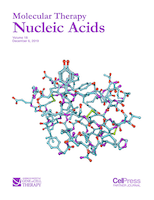
PROSTAGLANDINS LEUKOTRIENES AND ESSENTIAL FATTY ACIDS
Scope & Guideline
Charting New Territories in Lipid Mediator Studies
Introduction
Aims and Scopes
- Research on Fatty Acids and Health Outcomes:
The journal extensively covers the impact of various fatty acids, especially omega-3 and omega-6 polyunsaturated fatty acids (PUFAs), on health outcomes ranging from metabolic disorders to neurodevelopmental issues. - Mechanisms of Lipid Mediators:
It explores the biochemical pathways and mechanisms through which lipid mediators like prostaglandins and resolvins influence inflammatory responses and tissue repair. - Clinical Trials and Meta-Analyses:
The journal publishes results from clinical trials and systematic reviews that assess the efficacy of fatty acid interventions in various populations, providing evidence-based insights into dietary recommendations. - Biomarkers of Disease:
Research articles often investigate the association between fatty acid levels and biomarkers for diseases such as cardiovascular disease, diabetes, and inflammatory conditions, linking dietary fats to clinical outcomes. - Innovative Methodologies:
Methodological advancements in lipidomics and the analysis of fatty acid profiles in biological samples are frequently discussed, showcasing the journal's commitment to enhancing research techniques in this field.
Trending and Emerging
- Pro-resolving Lipid Mediators:
There is an increasing focus on pro-resolving lipid mediators such as resolvins and protectins, which play crucial roles in the resolution of inflammation and tissue repair, indicating a shift towards understanding inflammation management. - Impact of Omega-3 Fatty Acids on Mental Health:
Recent publications emphasize the effects of omega-3 fatty acids on mental health conditions, including anxiety and depression, showcasing a growing interest in the connection between diet and psychological well-being. - Fatty Acids and Pregnancy Outcomes:
Research on the implications of fatty acid intake during pregnancy and its effects on maternal and fetal health is emerging as a significant theme, reflecting a broader interest in nutrition during critical developmental periods. - Lipidomics and Personalized Nutrition:
The use of lipidomic profiling to personalize dietary recommendations and understand individual responses to fatty acid intake is gaining momentum, indicating a trend towards precision nutrition. - Fatty Acids in Chronic Disease Management:
There is an increasing number of studies linking fatty acid profiles to chronic diseases, suggesting a trend towards utilizing fatty acids as biomarkers for disease risk and management.
Declining or Waning
- Traditional Dietary Fats:
There is a noticeable decline in studies focusing solely on traditional dietary fats (like saturated fats) without considering their interaction with polyunsaturated fatty acids, suggesting a shift towards a more nuanced understanding of dietary fats. - Single-Component Studies:
Research concentrating on single fatty acids in isolation appears to be waning, as there is a growing trend towards examining the effects of entire dietary patterns or complex lipid profiles instead. - Animal Models in Early Research:
While animal model studies were previously prevalent, there is a noticeable decrease in their representation in favor of human clinical trials and epidemiological studies, indicating a shift towards more clinically relevant research.
Similar Journals

Lipids in Health and Disease
Connecting the dots between lipids and public health.Lipids in Health and Disease, published by BMC, stands as a leading open-access journal dedicated to advancing the understanding of lipid metabolism and its implications for health and disease. Since its inception in 2002, this journal has fostered accessibility to cutting-edge research, ensuring that knowledge in this vital field is disseminated widely to researchers, clinicians, and students worldwide. With a commendable Q1 ranking in multiple categories including Clinical Biochemistry and Endocrinology, Diabetes and Metabolism, it appeals to a diverse readership, positioning itself at the forefront of research in biochemistry and medicine. It boasts an impressive Scopus rank, where it excels in areas such as Endocrinology, Diabetes and Metabolism and Clinical Biochemistry, making it an essential resource for those looking to deepen their understanding of lipid biology and its clinical applications. Researchers can share and access findings that have significant implications for public health and disease prevention, emphasizing the journal's commitment to fostering innovation and collaboration in the scientific community.

Saudi Journal of Gastroenterology
Exploring breakthroughs in gastrointestinal studies.The Saudi Journal of Gastroenterology is a premier platform dedicated to advancing research and clinical practice in the field of gastroenterology. Published by Wolters Kluwer Medknow Publications, this open-access journal has been serving the academic community since 1995 from its base in India. With an ISSN of 1319-3767 and an E-ISSN of 1998-4049, the journal allows unrestricted access to a wealth of knowledge, fostering an environment where researchers, professionals, and students can engage with cutting-edge studies. As of 2023, it is categorized in the Q3 quartile within gastroenterology, ranking #74 out of 167 in Scopus, which places it within the 55th percentile of its field. The journal aims to disseminate significant findings, clinical trials, and innovative theories that shape the understanding of gastrointestinal disorders and practices. With a commitment to quality and relevance, the Saudi Journal of Gastroenterology is pivotal for anyone seeking to enhance their knowledge and expertise in this vital area of medicine.

Journal of Gastrointestinal and Liver Diseases
Championing Comprehensive Understanding in GastroenterologyThe Journal of Gastrointestinal and Liver Diseases, published by MEDICAL UNIV PRESS in Romania, serves as a pivotal platform for the dissemination of significant research in the fields of gastroenterology and hepatology. Established in 2006, this journal has evolved over the years, currently holding a Q3 rank in Gastroenterology and a Q2 rank in Medicine (miscellaneous), reflecting its commitment to high-quality scholarship and impactful contributions to medical science.
With an ISSN of 1841-8724 and an E-ISSN of 1842-1121, the journal engages a diverse readership of researchers, clinicians, and students passionate about advancing knowledge in gastrointestinal and liver health. While it currently does not operate under an open access model, the journal remains a vital resource for those seeking to stay updated on the latest developments and emerging trends in the field. As it converges towards a broader impact, projected through its coverage until 2024, the Journal of Gastrointestinal and Liver Diseases continues to contribute to the academic landscape, encouraging innovation and comprehensive understanding in digestive health.

Molecular Metabolism
Unlocking the Secrets of Molecular MetabolismMolecular Metabolism is a premier, open-access journal published by Elsevier, dedicated to advancing the understanding of metabolic processes at the molecular level. With an ISSN of 2212-8778 and a proud presence in Germany, the journal has made significant contributions to the fields of Cell Biology and Molecular Biology, consistently achieving a Q1 ranking in both categories as of 2023. The journal’s scope encompasses cutting-edge research that explores metabolic pathways, their regulation, and implications for human health, underscoring the interplay between metabolism and various biological functions. Researchers and professionals benefit from the journal’s robust visibility, as it ranks #40 among 410 journals in Molecular Biology and #35 among 285 in Cell Biology according to Scopus metrics, placing it in the top 10 percentile in its field. With open access since 2012, Molecular Metabolism ensures that groundbreaking research is available to all, fostering a collaborative and inclusive academic environment. Its commitment to excellence and accessibility makes it an invaluable resource for those invested in metabolic research.

Clinical Gastroenterology and Hepatology
Connecting Researchers and Clinicians for Better Health OutcomesClinical Gastroenterology and Hepatology, published by Elsevier Science Inc, stands as a leading journal in the fields of gastroenterology and hepatology. With an ISSN of 1542-3565 and an E-ISSN of 1542-7714, this esteemed publication has earned its place in the top quartile (Q1) of both gastroenterology and hepatology categories as of 2023, ranking 6th out of 167 and 7th out of 82 respectively. The journal aims to disseminate innovative research, clinical studies, and case reports that advance the understanding and treatment of gastrointestinal and liver diseases. Targeted towards researchers, healthcare professionals, and students, it provides crucial insights into emerging therapies and medical advancements. Clinical Gastroenterology and Hepatology is not only a pivotal resource for contemporary gastroenterological research but also fosters collaboration and knowledge-sharing within the medical community. With a converging publication history from 2003 to the present, the journal continues to build on its solid foundation of scientific excellence and relevance.

MOLECULAR BIOLOGY OF THE CELL
Elevating the Science of Cell BiologyMOLECULAR BIOLOGY OF THE CELL is a prestigious journal published by the American Society for Cell Biology, focusing on the latest advancements in cell biology and molecular biology. Established in 1990, this journal serves as a vital forum for disseminating innovative research, methodologies, and insights that drive the understanding of cellular processes and their implications in health and disease. With a noteworthy impact factor and recognition within the top quartiles for both Cell Biology and Molecular Biology, it ranks prominently among its peers, with Scopus rankings reflecting its significance in the scientific community. Although the journal does not follow an open access model, it provides essential access options for both institutional and personal subscriptions. Researchers, professionals, and students seeking to expand their knowledge and collaborate on groundbreaking findings will find MOLECULAR BIOLOGY OF THE CELL an invaluable resource in the field.

AMINO ACIDS
Where Biochemistry Meets InnovationAMINO ACIDS is a distinguished journal published by Springer Wien, specializing in the dynamic field of biochemistry, with a particular focus on the role of amino acids in biological processes. Since its inception in 1991, this journal has become a crucial resource for researchers and professionals, contributing valuable insights into the biochemical makeup and clinical applications of amino acids. With a commendable impact factor reflecting its high-quality publications, AMINO ACIDS consistently ranks in the Q2 category across biochemistry and organic chemistry domains as of 2023, demonstrating its significant influence within the scholarly community. The journal is indexed in Scopus and maintains strong rankings—59th in Organic Chemistry and 43rd in Clinical Biochemistry—highlighting its relevance and rigorous peer-review standards. While it currently does not offer open access options, the journal remains dedicated to advancing knowledge in both fundamental and applied biochemistry, making it an essential platform for disseminating cutting-edge research findings. For any academic seeking to explore the complexities of amino acids, AMINO ACIDS serves as an invaluable reference.

Molecular Therapy Nucleic Acids
Bridging knowledge and innovation in nucleic acid research.Molecular Therapy Nucleic Acids is a premier open-access journal published by CELL PRESS, dedicated to advancing the field of molecular medicine through the innovative application of nucleic acid-based therapies. Since its inception in 2012, this journal has become an essential resource for researchers and professionals in drug discovery and molecular medicine, reflected in its status as a Q1 journal in both categories for 2023. With a notable impact factor and high rankings in Scopus, including #8 out of 157 in Drug Discovery and #16 out of 178 in Molecular Medicine, it serves to disseminate groundbreaking research and foster collaborations among scientists worldwide. The journal's comprehensive scope encompasses a wide variety of topics, including gene therapy, RNA interference, and CRISPR technology, ensuring that it remains at the forefront of scientific excellence. With open access availability, Molecular Therapy Nucleic Acids actively promotes the widespread dissemination of knowledge, making its crucial insights accessible to students, researchers, and industry professionals alike.

Mljekarstvo
Exploring New Frontiers in Dairy ResearchMljekarstvo, published by the Croatian Dairy Union, is a prominent open access journal dedicated to advancing knowledge in the fields of Animal Science and Food Science. With roots in Croatia, this journal has established itself as a valuable resource for researchers, professionals, and students alike since its transition to open access in 2001. Notably, Mljekarstvo has achieved a commendable standing in the 2023 category quartiles, ranking Q3 in both Animal Science and Zoology and Food Science, indicating its significance within these areas. The journal's Scopus ranks further reflect its contribution to the field, with a percentile ranking of 47th and 39th in the respective categories. Covering an extensive range of topics related to dairy science, the journal aims to facilitate the dissemination of pioneering research and innovative practices within the industry. Located at Ilica 31-III, Zagreb 10000, Croatia, it fosters a collaborative academic environment and is dedicated to the ongoing development of dairy science.

OCL-Oilseeds and Fats Crops and Lipids
Cultivating Knowledge for a Sustainable FutureOCL-Oilseeds and Fats Crops and Lipids is a renowned open-access journal published by EDP Sciences S A, specializing in the fields of agronomy, food science, and biochemistry. Since its inception in 2000, this journal has vigorously contributed to the advancement of research surrounding oilseeds and fats, addressing critical issues related to crop production, lipid analysis, and sustainable practices in food science. With an impressive impact factor reflected in its 2023 rankings—Q2 in Agronomy and Crop Science, Q3 in Biochemistry, and Q2 in Food Science—OCL stands out for its rigorous peer-review process and commitment to disseminating high-quality research. Its Scopus rankings further establish its reputation within the scientific community, occupying the 73rd and 64th percentiles in Agronomy and Food Science, respectively. This makes it an essential platform for researchers, professionals, and students focused on enhancing the understanding and application of lipid science and oilseed cultivation. Located in France, OCL encourages a global dialogue on innovations and discoveries that can drive the future of agricultural production and food technology.